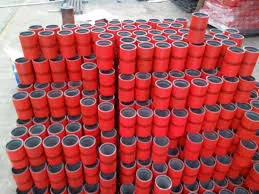- Afrikaans
- Albanian
- Amharic
- Arabic
- Armenian
- Azerbaijani
- Basque
- Belarusian
- Bengali
- Bosnian
- Bulgarian
- Catalan
- Cebuano
- Corsican
- Croatian
- Czech
- Danish
- Dutch
- English
- Esperanto
- Estonian
- Finnish
- French
- Frisian
- Galician
- Georgian
- German
- Greek
- Gujarati
- Haitian Creole
- hausa
- hawaiian
- Hebrew
- Hindi
- Miao
- Hungarian
- Icelandic
- igbo
- Indonesian
- irish
- Italian
- Japanese
- Javanese
- Kannada
- kazakh
- Khmer
- Rwandese
- Korean
- Kurdish
- Kyrgyz
- Lao
- Latin
- Latvian
- Lithuanian
- Luxembourgish
- Macedonian
- Malgashi
- Malay
- Malayalam
- Maltese
- Maori
- Marathi
- Mongolian
- Myanmar
- Nepali
- Norwegian
- Norwegian
- Occitan
- Pashto
- Persian
- Polish
- Portuguese
- Punjabi
- Romanian
- Russian
- Samoan
- Scottish Gaelic
- Serbian
- Sesotho
- Shona
- Sindhi
- Sinhala
- Slovak
- Slovenian
- Somali
- Spanish
- Sundanese
- Swahili
- Swedish
- Tagalog
- Tajik
- Tamil
- Tatar
- Telugu
- Thai
- Turkish
- Turkmen
- Ukrainian
- Urdu
- Uighur
- Uzbek
- Vietnamese
- Welsh
- Bantu
- Yiddish
- Yoruba
- Zulu
well tubing and casing
Understanding Well Tubing and Casing Essential Components of Oil and Gas Extraction
In the oil and gas industry, well tubing and casing play critical roles in the extraction process, ensuring safety, efficiency, and productivity. Understanding these two components is essential for professionals in the sector, as they directly impact the overall success of drilling operations.
What is Well Casing?
Well casing is a series of steel pipes installed in a drilled well to provide structural integrity and isolate different geological formations. The primary function of the casing is to support the walls of the borehole, preventing it from collapsing due to the surrounding pressures and geological conditions. Additionally, casing protects the well from contamination by surface water and other pollutants, maintaining the integrity of the reservoir.
There are various types of well casing including surface casing, intermediate casing, and production casing. The surface casing is the first layer installed and extends from the surface down to a predetermined depth. Its purpose is to secure the upper sections of the well and to protect groundwater resources. The intermediate casing is installed in deeper sections of the well, particularly when there are unstable formations that require additional support. Finally, the production casing is the innermost casing that extends to the depth of the hydrocarbon reservoir. This casing is crucial as it allows the hydrocarbons to flow up to the surface while also preventing the formation of unwanted fluids within the well.
What is Well Tubing?
Well tubing, on the other hand, refers to the pipe that is inserted into the wellbore after the casing has been installed. Tubing is typically made of high-strength steel and is designed to carry the produced fluids, whether oil, gas, or water, from the reservoir to the surface. While casing provides structural support, tubing is where the actual extraction process occurs.
One of the significant advantages of well tubing is its lighter weight compared to casing. This characteristic makes it easier to handle and install, which is particularly important during the completion phase of drilling. Tubing can also be equipped with various tools and valves, such as packers or downhole pumps, which can further enhance the production process.
well tubing and casing

The Importance of Proper Design and Installation
The design and installation of both casing and tubing are critical to the success of a well. Engineers must consider several factors, including the depth of the well, the properties of the geological formations, and the characteristics of the extracted fluids. Properly sized and installed casing and tubing help prevent leaks and failures, which can be costly and dangerous.
The selection of materials is also paramount. Casing and tubing need to withstand harsh conditions, including high pressures, corrosive substances, and extreme temperatures that are often encountered in subsurface environments. Therefore, using materials that can handle these challenges, such as carbon steels and special alloys, is essential for long-term performance.
Challenges in Well Tubing and Casing
Despite advancements in technology, the installation and operation of well casing and tubing are not without challenges. For instance, unexpected geological formations can complicate the drilling process, leading to issues such as stuck pipe or casing failure. Moreover, environmental regulations have become increasingly stringent, requiring operators to adopt best practices and technologies to minimize their environmental footprint.
Corrosion is another significant issue faced by operators. Over time, well tubing and casing can be susceptible to corrosion due to the interaction with produced fluids and other environmental factors. The implementation of corrosion-resistant materials, along with regular maintenance and monitoring, are vital to mitigating this risk.
Conclusion
In summary, well tubing and casing are fundamental components of oil and gas extraction that ensure the safe and efficient recovery of hydrocarbons. Their importance cannot be overstated, as they provide the structural integrity necessary for the well and enable the effective transport of produced fluids to the surface. As the industry continues to evolve, understanding the intricacies of tubing and casing design and installation will remain essential for optimizing production and maintaining safety in drilling operations.
-
Tubing Pup Joints: Essential Components for Oil and Gas OperationsNewsJul.10,2025
-
Pup Joints: Essential Components for Reliable Drilling OperationsNewsJul.10,2025
-
Pipe Couplings: Connecting Your World EfficientlyNewsJul.10,2025
-
Mastering Oilfield Operations with Quality Tubing and CasingNewsJul.10,2025
-
High-Quality Casing Couplings for Every NeedNewsJul.10,2025
-
Boost Your Drilling Efficiency with Premium Crossover Tools & Seating NipplesNewsJul.10,2025







